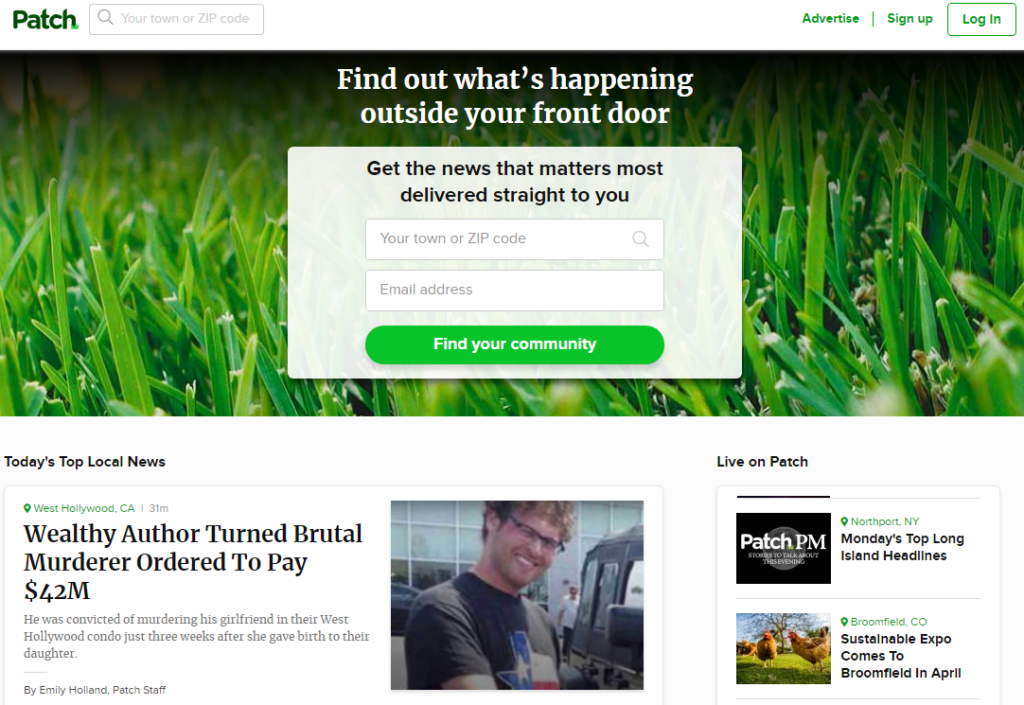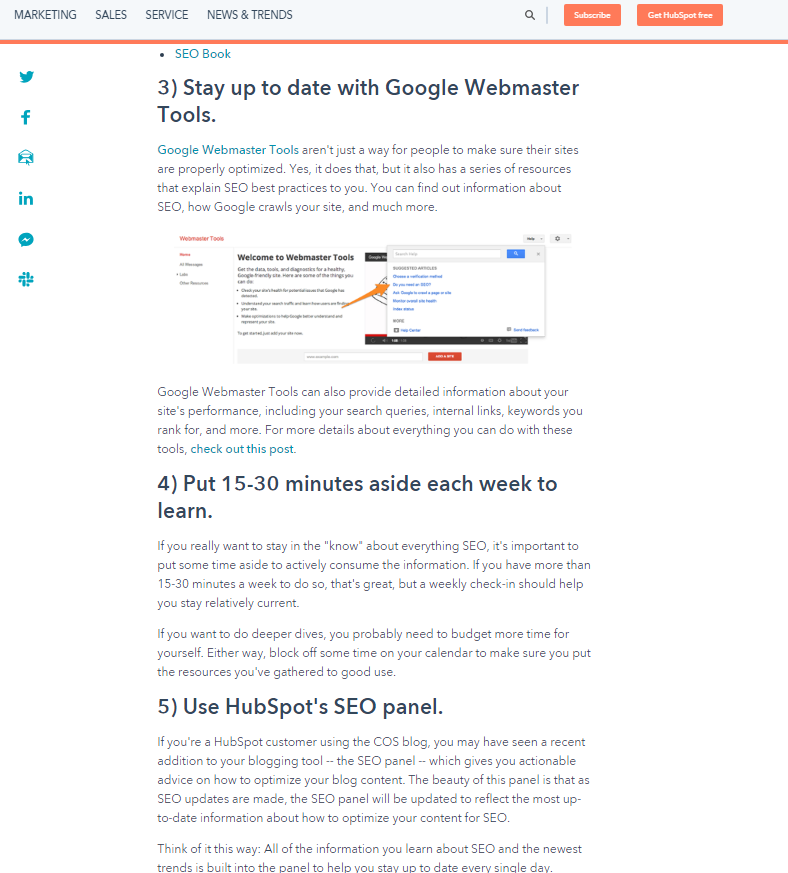A mid 2000s media company is doing the impossible: generating multi-million dollar profits from digital ad revenue. And their secret to success is one business bloggers may be able to replicate.
Patch, previously owned by AOL, is a online news company that might hold the key to saving local news, according to Recode.
Here’s how Patch pulls it off.
Patch is a digital-only local news company, and the differentiator turns on that regionality. Charles Hale, who’s owned the company for the past five years, tells Recode the network of sites numbers 1200, is hyper-local and generates $20 million in annual ad revenue. That’s the kinda numbers that make people sit up and take notice in these grim times for publishers.

The model is simple.
One reporter covers multiple towns submitting around 10 stories each day. Things like weather reports, car crashes, store openings and real estate news. I started my print career at a community newspaper and local news matters.
It might not grab national headlines – not at the start of a story, at least – but local publications are a space for residents and communities to learn about developments that affect their lives, and a controversial story will elicit a strong public reaction. It’s civic duty at its finest.
So what’s the takeaway for business bloggers?
Become your industry’s Patch. Now, don’t balk. This doesn’t mean you need to suspend your duties and commit yourself to push out ten articles a day. Instead, you have the opportunity to use your business blog to build authority, trust and credibility in your industry.
Here’s a few ways you can make that happen.
Build an Online Newsroom
Create a section on your site where you cover industry news updates. To keep track of developments, use tools like Google Alerts and monitor social media.
In this guide, Finn PR recommends regular meetings with experts in your own firm. Here is a detailed guide on building thought leadership with a newsroom approach .
The steps it recommends includes:
- Monitoring the media landscape
- Ideation – similar to a newsroom meeting
- Research to validate your content idea
When I worked in PR, we submitted monthly media
Stay in Your Lane
If the idea of creating a separate page for your updates isn’t appealing, an post on your blog does the job just as well.
On top of that, you don’t have to cover everything related to your
I recently listened to a Copyblogger podcast that provides a useful perspective. (If you ever want to up your content game, go binge on Copyblogger. In addition to the blogs, there’s loads of free training and ebooks.)
Host Sonia Simone was chatting to Ronell Smith,
But the lesson specific to content creation you can take away is Smith’s direction to focus on the competitive edge you hold and to hook your content on your specific expertise.
“It really comes down to specificity …where you have to have the courage of your convictions and say, ‘On this topic, nobody is going to beat me.’ That there’ll be sexier things that come along, but in this area nobody will ever beat me.”
I don’t think this means we shouldn’t evolve and develop ourselves and our businesses, but I believe Smith is cautioning against the temptation of following trends even when they don’t align with our mission.
Smith also offers a special piece of advice for business blogs that are struggling to maintain a consistent content schedule. Keep it simple.
I’ve written about the importance of elements like images, but Smith warns against small businesses getting “weighted down” by these features.
“If you’re fixing widgets all day or you have a staff of 20, 30 people, all you have time to do is getting something down. Do a short video, share a 500-word blog…but if we’re saying, ‘It has to be 10X or bust,’, then everyone’s going to feel that this is a hill that can’t climb.”
Smith’s referring to the idea around 10x content – content that’s better, different and more detailed than any other piece on the same topic.
So when you’re an authority on your topic, don’t sweat the extras. Get the content out and that’s how you help your customers. You bring a valuable point of view that’s based on your unique expertise. And this especially rings true if you’re running a business blog for a small business, and you don’t have extensive time to dedicate to content.
Lead With the News; Skip the Hard Sell
Now
It’s similar to some of the concepts in inbound marketing that advocate helping the customer, across all stages of the buyer’s journey. There’s a free Inbound Marketing course from HubSpot that takes you through the fundamentals of inbound marketing. In one of the sections, the HubSpot team interviews an entrepreneur that employed an inbound marketing strategy. He was in the swimming pool business and joked that his website was the “Wikipedia of swimming pools”. The strategy netted increased sales, turning the business around.
Now journalists are taught to strive for objectivity, and content writing doesn’t explicitly call for impartiality (this is not brand journalism because there’s no such thing as brand journalism!); however, you may find if you’re guided solely by your customer’s needs and wants, you’re presenting an analysis of the broader picture, and your business solution naturally features in this discussion.
You can see a good example in this Hubspot post about Google’s latest algorithmic update. They discuss a few ways readers can stay up to date with SEO trends and there’s a mention of their own tool.

Perhaps you list the facts in the piece and save the CTA for the last
Try setting up alerts for your industry today. Take it slowly and let your unique voice shine. That’s how you deliver a positive impact to your cutsomer – and your business.
